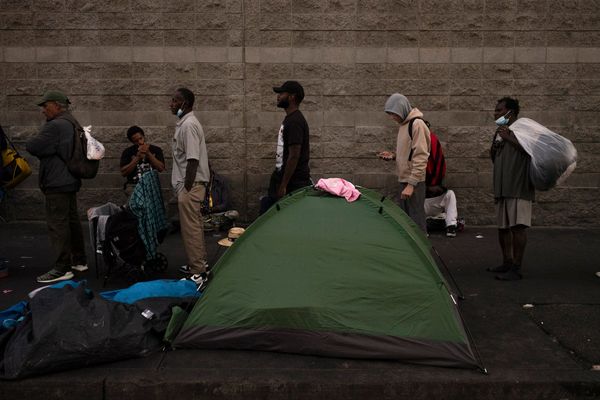
AS 2022 drew to a close an exhibition opened at the Museum of Art and Culture Lake Macquarie's (MAC) yapang Gallery.
It was the only public gallery exhibition of the Papunya Tula arts movement to be held in Australia during the year of the group's half-century milestone.
The exhibition, Affection: Papunya Tula's Women's Art, remains on show until late this month.
Internationally, the Papunya Tula painting movement of the Western Desert region is known for its revolutionary development in the transference to flat upright surfaces of ceremonial mark making, which was traditionally made on the ground and on bodies.
In the USA a two-year exhibition cycle was dedicated to commemorate the achievements of Papunya Tula, with an exhibition catalogue featuring an essay by actor-comedian Steve Martin, who is a collector of Australian desert painting.
The exhibitions were based on the Kluge-Ruhe Aboriginal Art Collection of the University of Virginia, showing works ranging from formative painting on scraps of board, through to masterpieces of epic abstraction.
The Kluge-Ruhe museum credits the Papunya Tula art movement as being not just one of historic significance (it was the first Australian Indigenous artistic community to corporatise), but one that has shown "constant artistic rejuvenation".
The Papunya Tula art movement "is one of the world's greatest stories of resilience, self-determination and the power of art", according to the gallery.

In the MAC yapang exhibition, curator Courtney Wagner has brought together an aesthetically stunning body of works from 25 women artists, with one painting from each of the last 25 years, arranged as a chronological journey around the gallery space.
The artists represented include Yukultji Napangati, who won the prestigious Wynne Prize in 2018 and was also twice Highly Commended in the prize.
Her mesmerising painting depicts sand hills and edible tuber roots, worked in wavey horizontal lines of dots alternating in sections of white and yellow ochre to create vertical bands that seem to levitate like a noon haze on a desert horizon.
While Papunya Tula painting started with male artists, women are now at the forefront of this "unstoppable movement", Wagner says.
The women's bold, radiant and experimental works are vessels of cultural knowledge, she says. "A memory bank."
The Papunya Tula art movement came to be after a non-Indigenous school teacher, Geoffrey Bardon, asked some local men to paint murals at the school.
That was 1971. Those murals have since been destroyed.
The men kept painting and in 1972 formed Papunya Tula Artists Pty Ltd, which is considered internationally as a revolution in social justice, with the company self-funding the building of a multi-million dollar arts buildings.
It was originally led by Clifford Possum Tjapaltjarri.
Papunya, which is outside Alice Springs, was set up in the 1950s by the government to house Aboriginal people of desert regions. Many have returned to country during the last decade, as part of the homelands movement.
Desert painting researcher Alec O'Halloran has travelled tracts of country with the relatives of Papunya Tula painter Mick Namarari Tjapaltjarri, who originated the art practice now known as dot painting.
O'Halloran, who wrote a book on Tjapaltjarri and spoke at opening events of the MAC yapang show, says dots had previously been used in conjunction with other mark making as part of overall compositions.
In his Mouse Dreaming - Tjunginpa Tjukurpa - works, Tjapaltjarri was the first Indigenous painter to use dots exclusively and densely across a whole canvas.
"He became famous for these great dotted canvases," O'Halloran says. "It kind of was his thing."
Tjapaltjarri's daughter Angelina Nungurrayi has inherited her late father's Dreaming, and his dotting method, with one of her depictions included in the MAC yapang show.
Tjapaltjarri's wife, Elizabeth Marks Nakamarra, paints an ancestral story of a huge storm that formed new rock holes.

She started out depicting the rock holes, using the established roundel motif. But then she decided to paint the lightning, developing a dynamic geometric representation.
"When she described her painting to me once she said, 'the storm came and there was lightning, lightning, lightning, lightning'," O'Halloran says. "Only Elizabeth can paint the lightning story."
It is one of Nakamarra's lightning paintings that represents her work in the current exhibition.







